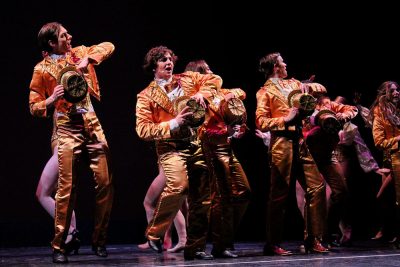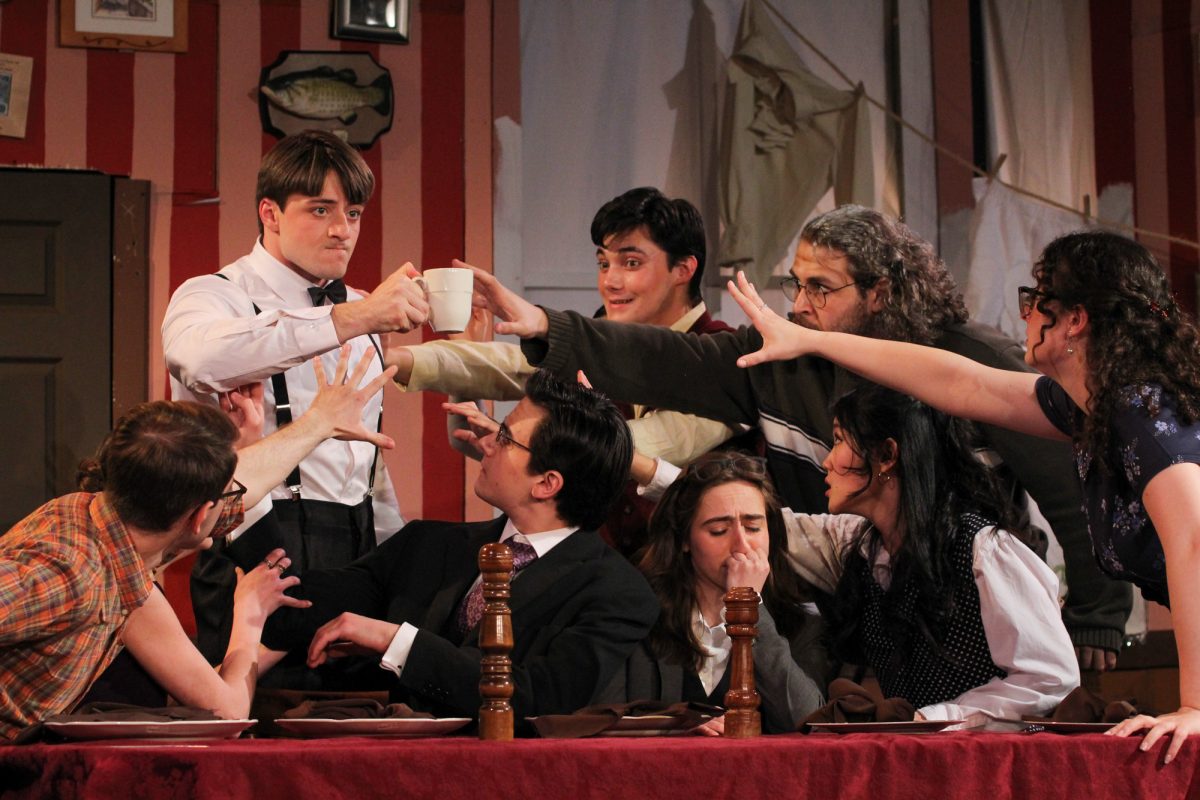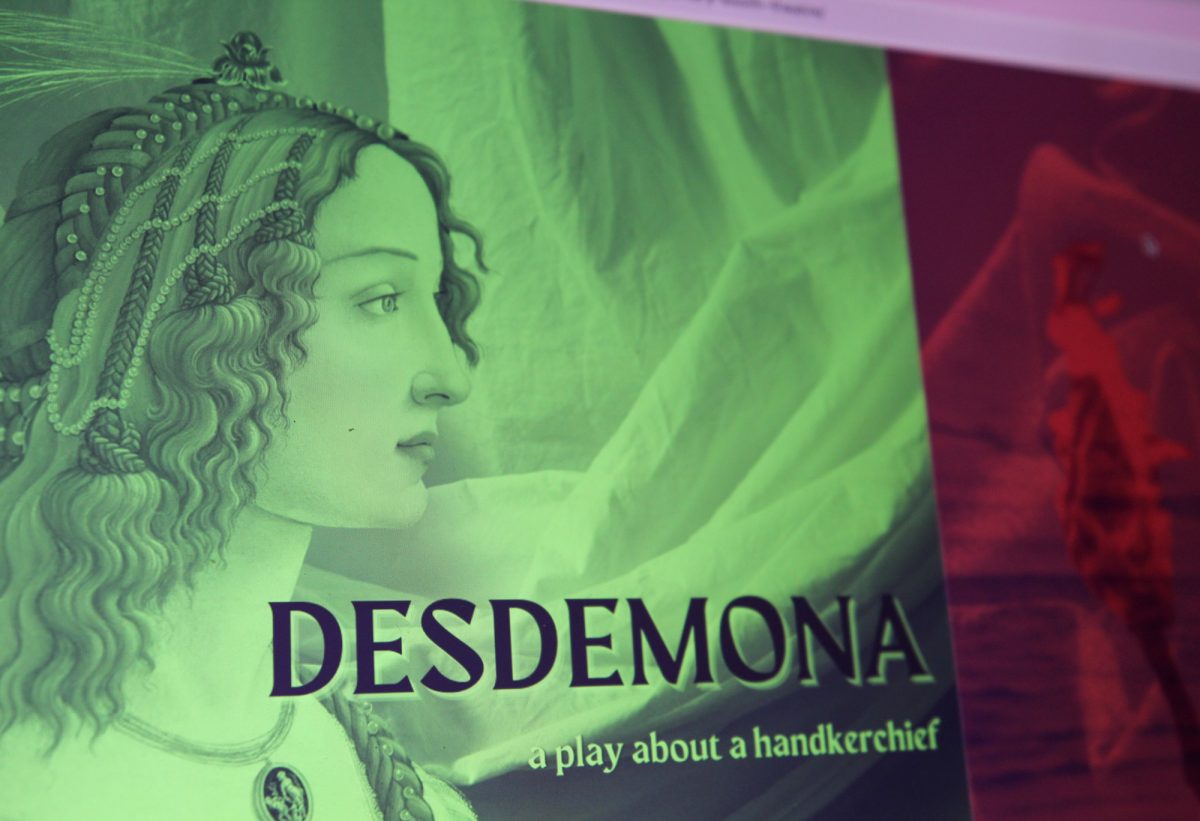When “A Chorus Line” premiered at New York City’s Shubert Theater in 1975, no one suspected the unconventional musical would climb to the impressive heights it did.

The show, created by Marvin Hamlisch, Edward Kleban, James Kirkwood and Nicholas Dante, is still admired and revived 50 years later. It centers around an ambitious group of dancers as they audition for an ensemble role in a musical, all while redefining what it means to be a Broadway star.
Since its debut, the popular show has been constantly revived – and BU on Broadway is no exception. They performed “A Chorus Line” this past weekend at Tsai Performance Center and faced some obstacles.
For one, the musical relies heavily on the performances of the cast, without an elaborate set or extravagant costumes to serve as a distraction. There are 17 equally-valued leads, and in the demanding show, these actors perform touching monologues, dance in numerous styles and provide the audience with enough comedic relief to keep them engaged for the show’s two hour run time, notably devoid of an intermission.
On top of that, there’s always the fear that a musical such as “A Chorus Line” is standing on its last legs of relevance, evident when Jesse Green of The New York Times said, “What’s thrilling about the show invariably remains so. But I wonder if the rest is beginning to get creaky.”
However, I’m happy to say that BU on Broadway’s production, directed by College of Communication senior Matthew Segalla, did not disappoint. It propelled the musical’s themes of unity behind a love for dance to new, modernized heights — apart from the occasional pair of ‘70s leg warmers, that is.
The musical’s opening number, “I Hope I Get It,” was perfectly representative of the show’s direction and my personal favorite. The director Zach, played by College of Arts and Sciences sophomore Ben Coderre, meandered across stage critiquing the performances of a group of dancers we would soon grow to love.
As the group’s numbers dwindle in this song, we are left with 17 auditionees, each with a vastly unique story but united in their desperation for a role.
CAS senior Sarah Cocroft shined as Kristine in “Sing!” while she explained to the audience — in her voice-crack ridden tone — that there’s a reason she’s a dancer and not a singer. Her chemistry with her husband Al, played by College of General Studies freshman Thomas Vice, made them obvious crowd-pleasers and their voices beautifully contrasted.
Several auditionees stood out with their singing, overpowering the loud instrumentals to grasp the audience’s attention. Maggie, played by COM freshman Emma Garner, showed off her effortlessly consistent sound in “At The Ballet.”
The upbeat number “Dance: Ten; Looks: Three” gave Val, played by Wheelock College of Education junior Katie Shein, the amo she needed to show off her singing chops, as well as her powerfully engaging stage presence, all while she sang of the importance of “tits and ass” in the theater business.
While some stories were starkly more engaging than others, characters like Sheila, played by College of Fine Arts and COM junior Amanda Primosch, amended the show’s disconnect with the comedic relief of her shamelessly sexy demeanor when conversing with Zach.
The same can be said for Bobby, played by Nat Pagliocco, whose monologue was animated and highly engaging. He didn’t hold back when describing his conservative upbringing in Buffalo, New York, hitting the mark with the line, “But then I realized — to commit suicide in Buffalo is redundant!”
A standing ovation is in order for COM junior Martin Perez’s portrayal of Paul, whose painful monologue, disclosed to the audience at Zach’s demand, was met with widespread applause. Alone on stage, Paul explained the trauma of being disowned by his parents because of his homosexuality. Martin’s acting was spot-on as his voice cracked in anguish and his shoulders tensed with nervousness.
CAS senior Kat Daniel’s choreography warrants special recognition as the musical’s backbone. Given its subject, “A Chorus Line” relies heavily on dance, requiring more than your average step-ball-change to tell the story well. The reprise of “One” in the finale filled a Rockette-kickline shaped hole in my heart which I didn’t know was there, executed with satisfying synchronization and sparkly gold leotards.
By the end of the show, we were once again greeted by the dancers standing in a line, eight of whom Zach would select for the ensemble — but I’ll spare you any spoilers.
It was then that the musical’s true theme came full circle. Though we may have had an affinity for certain characters and crossed our fingers that they would get the gig, the truth is that it doesn’t matter. At its core, “A Chorus Line” is about a group of true artists, inexplicably united by their undying love for dance, and nothing can break that.






















































































































